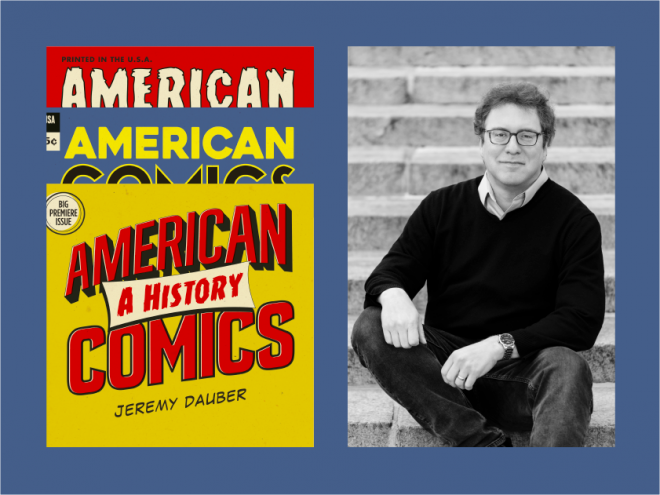Samantha Baskind is Professor of Art History at Cleveland State University. Her most recent book is Jewish Artists and the Bible in Twentieth-Century America. She is blogging here this week for Jewish Book Council’s Visiting Scribe series.
 For the most part I write about twentieth-century Jewish American artists. For a period of time I favored artists that came of age during the Great Depression and so I did not have the opportunity to interview most of them. In 2005, while researching an encyclopedia I was writing, I sent the same questionnaire to all of the living artists that I planned to include in the volume. Among the questions I asked were: “What, if anything, do you consider Jewish about your art?” “How, if at all, has your Jewish identity influenced your art?” “How do you define Jewish art?” “Does one artwork, if any, exemplify your Jewishness? If so, why?”
For the most part I write about twentieth-century Jewish American artists. For a period of time I favored artists that came of age during the Great Depression and so I did not have the opportunity to interview most of them. In 2005, while researching an encyclopedia I was writing, I sent the same questionnaire to all of the living artists that I planned to include in the volume. Among the questions I asked were: “What, if anything, do you consider Jewish about your art?” “How, if at all, has your Jewish identity influenced your art?” “How do you define Jewish art?” “Does one artwork, if any, exemplify your Jewishness? If so, why?”
Here are five particularly intriguing responses:
1. Audrey Flack, known especially for her intensely illusionist photorealist paintings, defined Jewish art from her always-unique perspective: “I guess Jewish art is specifically religious art like Christian art and like Muslim art. It’s a catchy thing because Jews aren’t supposed to make images. Jewish art is probably humanist.… With Jews there’s a celebration of life. I think minimalism is the opposite of Jewish art. One green pea on a piece of roast beef.”

Audrey Flack, World War II (Vanitas), 1976 – 77
2. When asked about what, if anything, figure painter Philip Pearlstein considers “Jewish” about his realist art, he replied, “almost nothing, but I think that [my art] is very American – specifically New York and perhaps that includes something Jewish.”
3. Conceptual and performance artist Eleanor Antin described her perspective on the Jewishness of her art as such: “I don’t think being Jewish has been particularly relevant in my work, though maybe my independence has had something to do with it. I’ve been more or less fortunate in my career – though artists are never satisfied – but I’ve always been something of an outsider. I never fit in that neatly with anybody else. My state of permanent exile. My personal Diaspora. Given this lousy world, it’s not such a bad place to be. And perhaps my comedy. My work has a dark streak but it’s also funny. Maybe that’s a Jewish trait. Laughing all the way to the cemetery.”
4. Photographer Arnold Newman reflected on a series of works made in Israel that he considered influenced by his Jewish heritage: “I made a lot of photographs of Israel. I sometimes went there to attend annual meetings of the board of the Israel Museum. My Jewish knowledge and my heart influenced the way I photographed Israel. The prime ministers, who I photographed, are history more than anything else. I put together a show of 57 photographs of Jews from all around the world that influenced Jewish history and culture. Can you call that Jewish art? I don’t know. One of my best non-portrait photographs is of the Western Wall. There was a rabbi at the Wall and he asked me not to photograph him, so I photographed his shadow.”
5. Pioneering feminist artist Miriam Schapiro chose to address her Jewish identity, explaining that she is “not religious. It is the cultural aspect of Judaism that interests me. In other words – where I came from and how these people lived before me and now. When I am interested to discuss my identity – being Jewish comes to mind and I make a work that reminds me of what it is to be Jewish.”
These artists’ responses are diverse, to say the least, as are the many other comments and reflections that I received. Invariably, when I give book talks or public lectures I am asked: “What is Jewish art?” The audience, of course, expects me to share a definitive answer – I am the so-called expert. What I offer are the words and thoughts of the very artists that I have studied, while we look at some of the art in question, which I show during my presentation. I open up the conversation to the group with whom I am speaking and we try to find an answer together.
The answers are rarely the same.
Samantha Baskind is the author of several books on Jewish American art and culture, which address subjects ranging from fine art to film to comics and graphic novels. She served as editor for U.S. art for the 22-volume revised edition of the Encyclopedia Judaica.
Related Content:
- Reading List: Samantha Baskind
- Essays: An Artistic Eye
- Reading List: Jewish Artists
- Essays: On Writing Jewish Literature and Being a Jewish Writer
Samantha Baskind is Distinguished Professor of Art History at Cleveland State University. She is the author or editor of six books on Jewish American art and culture, which address subjects ranging from fine art to film to comics and graphic novels. She served as editor for U.S. art for the 22-volume revised edition of the Encyclopaedia Judaica and is currently series editor of Dimyonot: Jews and the Cultural Imagination, published by Penn State University Press.



